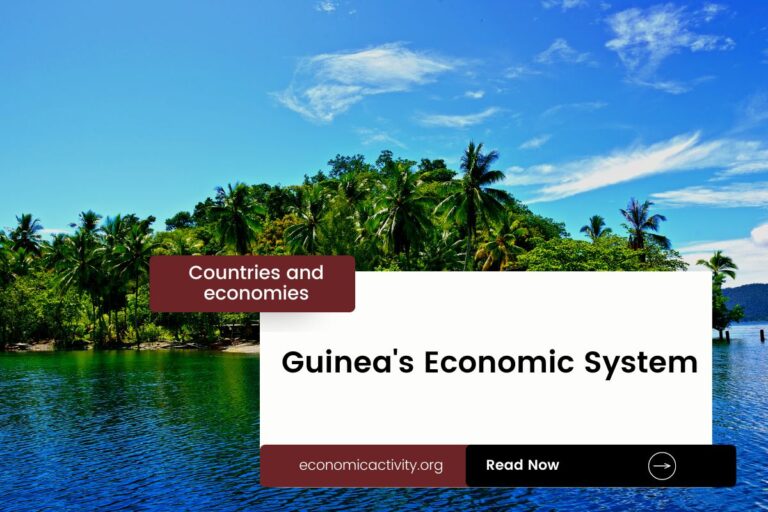Cambodia, with a population of 16,767,842, is ranked 70th in the world, just behind Senegal. Located in Southeast Asia, it covers a total area of 181,040 square kilometers, ranking 85th globally, just below the Syrian Arab Republic.
Cambodia’s economic position in 2022 is notable, with a GDP of $29,504,829,319.31, ranking 104th globally. It falls behind Trinidad and Tobago, with a GDP of $30,053,575,132.14. The GDP per capita for Cambodia is $1,759.61, placing it at 149th position worldwide.
It lags behind Mauritania, with a GDP per capita of $2,065.16. Despite facing challenges, Cambodia’s economy shows potential for growth and development in the coming years.
What are the economic activities of Cambodia?
- Primary activities: 25.3% of GDP.
- Secondary activities: 32.8% of GDP.
- Tertiary activities: 41.9% of GDP.

Primary Sector of Cambodia
In Cambodia, the primary sector, particularly agriculture, plays a significant role in the economy. With 34.55% of the country’s land dedicated to agriculture, the sector produces a variety of crops and animal products. The main agricultural products include cassava, rice, maize, sugarcane, vegetables, oil palm fruit, rubber, bananas, jute, and pork.
While agriculture contributes 25.3% to the GDP, its importance extends beyond economic metrics. The sector provides employment, food security, and sustains rural livelihoods. The diverse range of crops and animal products highlights the resilience and potential of Cambodia’s agricultural sector.
With a diverse geological landscape, the primary sector thrives in Cambodia with abundant natural resources like oil and gas, timber, gemstones, iron ore, manganese, phosphates, and hydropower potential. These resources significantly contribute to the economy through exports and employment opportunities, utilizing the vast expanse of arable land for agriculture.
Secondary Sector of Cambodia
What is the secondary sector or what are secondary activities?
The secondary sector comprises industries that transform raw materials from primary activities into finished products for consumption. In Cambodia, the main industrial products include garments, construction materials, rice milling, wood products, rubber, cement, gemstones, and textiles. These products are manufactured for domestic consumption and export, contributing significantly to the country’s economy.
Manufactures play a crucial role in Cambodia’s total exports, accounting for 90.8% in 2023. This highlights the significant economic contribution and dependency on the manufacturing sector for the country’s export revenue.
Tertiary sector of Cambodia
What is the tertiary sector or what are tertiary activities?
The tertiary sector in Cambodia encompasses various services where individuals provide expertise and time to enhance productivity and meet needs. This sector includes intangible goods such as advice, attention, and knowledge. Key tertiary activities in Cambodia are Restaurants, Healthcare, Education, Banking, Communication, Tourism, and Transportation. These services play a crucial role in supporting the country’s economic growth and development.
Highlighting these, Cambodia’s economy heavily relies on tourism, contributing significantly to its GDP. With 6,611,000 annual arrivals and a tourist arrival ratio of 0.3943, the sector plays a crucial role. Angkor Wat, a UNESCO World Heritage Site, and the stunning beaches of Sihanoukville attract millions of visitors yearly, driving the nation’s economic growth.
Another example of tertiary economic activity is the mobile cellular sector, with approximately 19.5 million subscriptions, supporting technological growth by enhancing connectivity and enabling digital services across the economy.
Military Activities and Economic Sectors of Cambodia
The military is a key example of various economic activities in a country. In Cambodia, the military engages in the primary sector by extracting resources for defense. The secondary sector is involved in manufacturing military equipment. The tertiary sector provides services, while the quaternary sector focuses on research and development for military needs. Finally, the quinary sector involves high-level decision-making and strategy in the military.
In 2023, Cambodia’s military expenditure is $668 million, which is 2.09% of its GDP. The active military force consists of 124,300 personnel. This means there are about 11.6 active military members for every 1,000 people in the country.
International Trade of Cambodia
Import Activities of Cambodia

Cambodia’s high import activities, accounting for 54.85% of GDP, signify its reliance on foreign goods for economic growth.
Cambodia’s key import activities include gold, refined petroleum, fabric, plastic products, and vehicle parts/accessories. The country’s major import partners are China (30%), Thailand (19%), Singapore (18%), Vietnam (13%), and Switzerland (3%).
Exports Activities of Cambodia

Export activities in Cambodia are of high importance, constituting 68.34% of the GDP in 2023. Total exports reached $20.16 billion, highlighting the significant role they play in driving the country’s economy.
Cambodia’s export activities primarily focus on garments, trunks, footwear, cassava, and shoes. The country’s top export partners are the US, Vietnam, Germany, Japan, and Canada, with the US being the largest at 36%.
Cambodia economy challenges in 2024
Cambodia faces challenges in 2024 despite economic growth. The country struggles with poverty in rural areas, impacted by the loss of EU market access and COVID-19. The manufacturing and construction sectors are vital, but disparities persist.



Leave a Reply